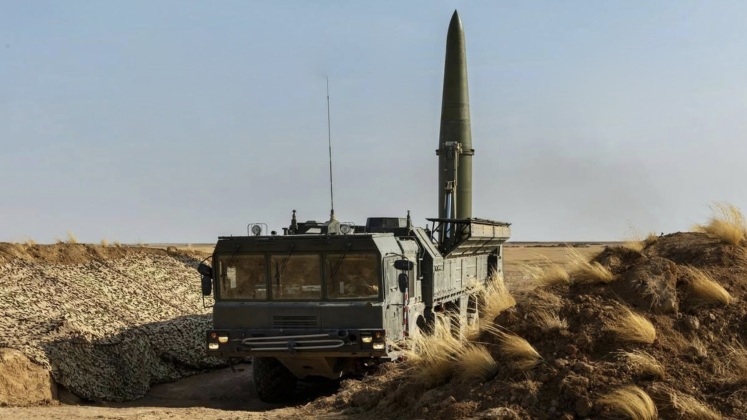The Russia Military is reportedly expected to soon receive Iranian Fateh-110 short ranged ballistic missiles and the class’ extended range derivative the Zolfaghar, which provide lighter and less costly complements to Russia’s own limited arsenal of Iskander-M tactical ballistic missiles that have been used extensively in the conflict. Both Iranian missiles have been combat tested extensively against targets in Iraq and Syria, including not only insurgent groups, but also in the case of the Zolfaghar a U.S. military base in January 2020 as part of a strike which caused over 100 American casualties. Both missiles have demonstrated a high degree of precision, although neither have the advanced semi ballistic trajectories or hypersonic impact speeds of the Iskander. As the Russian Military built its tactical ballistic missile arsenal with war with NATO in mind, its arsenal is not well suited to engaging the kind of sustained campaign against highly numerous and relatively expendable mass infantry forces such as that Ukraine has relied on, which have continued to outnumber Russian infantry in the theatre several times over. The issue has been exacerbated by the fact that Russia has sought to conserve a significant portion of its missile arsenals to retain a viable fighting capability against NATO. Iran’s missile arsenal by contrast, which includes many times as many missile classes including very large numbers of relatively expendable low cost designs, is potentially ideal for Russia’s current needs.

The Fateh-110 has a 300km engagement range, and first entered service in 2002 four years before the Iskander. It was only in 2010 that the missile saw its range extended to 300km, with original variants having a 200km range. The missile program reportedly heavily leveraged North Korean technologies which were transferred to Iran as part of a license production agreement for the Hwasong-6 ballistic missile, which has a 500km range and was manufactured in Iran as the Shahab-2. A notable improvement of the Fateh-110 over the original Korean design is its use of a solid fuel composite, which allows the missiles to be stored fully fuelled and thus fired much more quickly. The missile has demonstrated very high precision, and uses both satellite and electro optical terminal navigation. It has been exported to Syria and the Lebanese militia Hezbollah, both of which fought alongside Russian forces as part of counterinsurgency efforts in Syria from 2015. An extended range version of the missile, the Fateh-313, is also in Iranian service and could see exports to Russia in future, although with targets further away in Western Ukraine being much better protected by air defences the value of such a missile may be more limited.

The Zolfaghar entered service in the Iranian arsenal in 2017, and boasts a 700km engagement range which would make it the longest ranged ground launched missile in the Russian arsenal aside from strategic ICBMs. The missile notably benefits from the ability to separate in its midcourse phase, which makes it significantly more difficult to intercept. An extended range variant of the missile, the Dezful, was unveiled in 2019 with a 1000km range although it remains uncertain whether this has been widely inducted into service or offered to Russia. It is expected that Russia will acquire the Fateh-110 in much greater numbers than missiles from the other classes, as its short range is expected to be more than sufficient to reach key targets across much of Ukraine for massed precision strikes. With Iranian officials having highlighted that the country’s missile arsenal has grown so large as to create storage issues, high Russian demand for the missiles complementing its massive acquisitions of Iranian drones could quickly diminish these stockpiles and generate more orders for the Iranian missile industry. Iran’s Shahed 136 drones having already had a major impact in Ukraine, and the Fateh-110 and possibly its extended range derivatives could well soon sway the tide of the war to an even greater extent in Russia’s favour. The growth in Iranian arms exports to Russia has notably come as American weapons supplies to Ukraine are expected to decline due to growing strains on limited productive capacities and the depletion of the country’s arms reserves.
